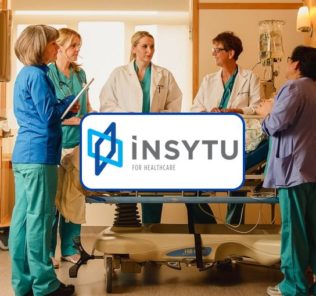How to Increase Participation in Your Healthcare Simulation Program
As a healthcare simulation educator, one can be overwhelmed when establishing a new clinical simulation program. Once the curriculum has been identified for the clinical simulation program, the next phase can be how to entice individuals and departments to attend the simulation education sessions. This HealthySimulation.com article by Erin Carn-Bennett, MSN, RN, will explore ideas and concepts around how to structure, plan, and advertise clinical simulation education so participants will sign up for a course.
Healthcare simulation is a powerful educational tool to enhance clinical skills for all team members. A plan of effective strategies for simulation faculty members to attract and engage future participants to attend is vital. This will allow participants to get excited and motivated to participate in clinical simulation education and grow and expand the organization’s program.
Gain Clarity on What Healthcare Simulation Is and Is Not
Sponsored Content:
The first step is to start with clarity of the clinical simulation courses and how simulated learning can benefit healthcare participants. Having a clear structure of the clinical simulation program will be helpful for those involved to deliver the healthcare simulation and potential participants. Compelling clinical simulation education sessions with content which is clear and concise educational objectives will increase appeal to potential participants.
Engaging and relevant content to showcase the practical benefits of healthcare simulation will draw participants to clinical simulation courses. A structure and plan to promote clinical simulation education in the organization will likely yield a successful program. Circulate promotional material about how healthcare simulation will address real-world challenges and improve patient outcomes.
To appeal to learners, promote the practical application of healthcare simulation, and emphasize the hands-on experience. Participants are also interested in real-life scenarios and how clinical simulation can improve clinical decision-making in a safe environment. This is an excellent opportunity to showcase clinical simulation’s quality and safety benefits, but also to demonstrate why or when medical simulation may not be the best solution. Instead, acknowledge that simulated training has its specific place within the learning and training process. The best possible outcomes will come from the right simulation at the right time, done in the right way.
Network and Collaborate to Expand Your Stakeholders
Sponsored Content:
A major skill required in the healthcare simulation educator or team member role is the ability to network. Being able to connect with others in a variety of places is important to understand the different educational requirements for various professions and clinical environments. Effective networking allows the simulation educator to promote and sell what the healthcare simulation courses offer. To succeed, the simulation educator must meet people face to face for professional collaboration to extend networks and grow the simulation program.
If one has the ability and funds available, explore options to collaborate with key influencers and educators in the healthcare simulation world to add credibility to the clinical simulation program. Reach out to accomplished simulationists, if possible, to participate as faculty to complement the clinical simulation program. The endorsement of the clinical simulation program can significantly increase credibility and appeal.
To be clear about who the target audience is for the proposed healthcare simulation is also important. If cost is a factor for courses, be clear about what the charge will be or know what the fee will be. Include and advertise the program as to what and how much clinical education credits will be supplied upon completion of the clinical simulation course. Collaborate with relevant bodies to reinforce credibility and be a strong incentive for participants and their organization.
Keep a record of participants that have attended previous healthcare simulation courses and then offer them new courses as the opportunity arises. Consider this alongside other offers for potential participants, such as early bird discounts or group discounts on sign-up for clinical simulation courses. Use established networks also to share news of future courses and consider the use of referral discounts when others sign up through word of mouth for the organization’s clinical simulation course.
Advertise and Showcase: “If You Build It They Will Come”
Advertise internally in the organization worked for as much as possible as this is low cost or free. This may include the placement of leaflets on notice boards or in prominent locations where potential participants may be through traffic. Internal newsletters, email threads, websites, or internal home pages can be an optimal position for an advertisement.
Social media and online platforms can be incredibly useful tools to promote healthcare simulation courses. All social media platforms have a prominent clinical simulation community available to be tapped into for marketing purposes. Engaged content, which can be shared via videos, testimonials, and behind the scenes experiences, will allow colleagues and supporters to assist in the ability to share information in regards to clinical simulation courses for the organization.
Engaged invitations and marketing materials will enthuse potential participants. Graphics and infographics can easily be curated online to promote engagement on posts and an opportunity for further testimonials to be shared in the comments sections.
If bandwidth exists, conducting webinars and information sessions before the clinical simulation education courses can be useful. Plan an open house to demonstrate the simulation spaces, technologies and learning opportunities. The purpose of these events can be to encourage sign-up to courses and also allow potential participants to ask questions to see if the course is fit for their educational needs. Webinars can be either free or a fee charged, which may be another stream of income for the organization’s clinical simulation program.
Gather Feedback to Demonstrate Continued Improvement
After completion of a healthcare simulation education course, consider a post-course follow-up process with participants. Allow participants to provide feedback on the clinical simulation course experience in a forum of choice. There may be other options rather than a survey that may be preferential to the organization.
An online survey can be incredibly helpful with both Likert scales and free text options for participants to have their voices heard post the course. Consider alterations to the clinical simulation course after review of course evaluations. Keep a record of post-course evaluations for future comparisons of feedback from participants.
View the HealthySimulation.com LEARN CE/CME Platform Webinar Expand Your Healthcare Simulation Program by Building Relationships to learn more!
In this article, there has been a discussion about how to increase participant attendance at clinical simulation courses. There have been multiple suggestions of how to increase the likeliness of attendance through collaborations, planning, and also considered and structured marketing. The process of design, delivery, and promotion of healthcare simulation courses should be well considered and planned for. The success of a clinical simulation program can be enhanced by the suggestions weaves throughout this article.
Learn More About Healthcare Simulation Center Design
Erin Carn-Bennett is a Simulation Nurse Educator for the Douglas Starship Simulation Programme in Auckland, New Zealand. Carn-Bennett has her Masters of Nursing and has an extensive nursing career within pediatric emergency and also nursing management. She is passionate about debriefing and all things simulation. Carn-Bennett is a member of the IPSS board of directors. Carn-Bennett is the lead host of the podcast Sim Nurse NZ.
Sponsored Content:


















